Dustin, Basically: Maybe If You Could Be A Little Bisexual, We Could Get Some Work Done Stranger Things




dustin, basically: maybe if you could be a little bisexual, we could get some work done stranger things 4, chapter 2: vecna’s curse
More Posts from Dipstickflopdoodle and Others

The Hunger Games, Actual Teen style!
On the left, 15-year-old Josh Hutcherson.
On the right, 16-year-old Jennifer Lawrence.
Think how much creepier it would be to see them killing other kids when they look so squishy-cheeked and little.
my 10 holy grail pieces of writing advice for beginners
from an indie author who's published 4 books and written 20+, as well as 400k in fanfiction (who is also a professional beta reader who encounters the same issues in my clients' books over and over)
show don't tell is every bit as important as they say it is, no matter how sick you are of hearing about it. "the floor shifted beneath her feet" hits harder than "she felt sick with shock."
no head hopping. if you want to change pov mid scene, put a scene break. you can change it multiple times in the same scene! just put a break so your readers know you've changed pov.
if you have to infodump, do it through dialogue instead of exposition. your reader will feel like they're learning alongside the character, and it will flow naturally into your story.
never open your book with an exposition dump. instead, your opening scene should drop into the heart of the action with little to no context. raise questions to the reader and sprinkle in the answers bit by bit. let your reader discover the context slowly instead of holding their hand from the start. trust your reader; donn't overexplain the details. this is how you create a perfect hook.
every chapter should end on a cliffhanger. doesn't have to be major, can be as simple as ending a chapter mid conversation and picking it up immediately on the next one. tease your reader and make them need to turn the page.
every scene should subvert the character's expectations, as big as a plot twist or as small as a conversation having a surprising outcome. scenes that meet the character's expectations, such as a boring supply run, should be summarized.
arrive late and leave early to every scene. if you're character's at a party, open with them mid conversation instead of describing how they got dressed, left their house, arrived at the party, (because those things don't subvert their expectations). and when you're done with the reason for the scene is there, i.e. an important conversation, end it. once you've shown what you needed to show, get out, instead of describing your character commuting home (because it doesn't subvert expectations!)
epithets are the devil. "the blond man smiled--" you've lost me. use their name. use it often. don't be afraid of it. the reader won't get tired of it. it will serve you far better than epithets, especially if you have two people of the same pronouns interacting.
your character should always be working towards a goal, internal or external (i.e learning to love themself/killing the villain.) try to establish that goal as soon as possible in the reader's mind. the goal can change, the goal can evolve. as long as the reader knows the character isn't floating aimlessly through the world around them with no agency and no desire. that gets boring fast.
plan scenes that you know you'll have fun writing, instead of scenes that might seem cool in your head but you know you'll loathe every second of. besides the fact that your top priority in writing should be writing for only yourself and having fun, if you're just dragging through a scene you really hate, the scene will suffer for it, and readers can tell. the scenes i get the most praise on are always the scenes i had the most fun writing. an ideal outline shouldn't have parts that make you groan to look at. you'll thank yourself later.
happy writing :)
⛤Love Spell With A Pink Satin Ribbon⛤

This is a ritual that serves to attract love.
You’ll need:
A pink satin ribbon
A pink candle
It is necessary to prepare one pink ribbon of satin so that it does not have a knot, which we will wrap around the candle of soft pink color.
Then the following is written on the paper:
"I am asking Venus, the goddess of love, to send me true love (say what virtues and characteristics a person should have)."
This paper is left next to the burning candle.
Before the candle burns out, take the pink ribbon and carry it in a wallet or purse.
⛤Isidora ⛤

What are the different “types” of witches?
During the infamous witch persecutions that happened across Europe and America between 1450 and 1750, the members of the Church that led the inquisitions had a very clear idea of what they meant by a “witch”. These were mostly women, but sometimes men, who had entered into pacts with the devil and his servants.
But the term “witch” has been used to refer to many different types of people across the centuries. In the Viking age, Norse witches were principally seeresses who could also detect negative energies that might be affecting a household or community. In the Greco-Roman world, witches and magicians were again principally diviners. In ancient Egypt, they wrote down spells to heal or remove hexes. In early medieval Europe, they were often wise women and healers who provided alternative medical care.
In the modern world, when someone refers to themselves as a witch, it could mean various things. Witchcraft is a very open practice, and you do not need to fit into a specific mold. That said, the witchcraft community has coined some terms to help define the different types of witches. Below is a list of some of the most common types of witches.
Coven Witch
A coven witch is a practitioner who is a member of a coven, which is simply a community of witches. Covens gather to teach one another and to pool their energy and power to have a greater impact on the world around them. Covens will sometimes have formal structures and admissions processes and are usually led by a high priestess or priest.
Solitary Witch
A solitary practitioner is a witch who prefers to practice on their own. Their journey of learning and self-discovery is between them and a higher power, and they may choose not to tell others about their calling and practice. Solitary practitioners choose this approach and are not simply solitary due to a lack of other witches.
Hedge Witch
Hedge witches tend to be natural witches who use the power of nature to create remedies and harness certain powers. They have great respect for nature, will often work with the elements, and tend to be knowledgeable herbalists. Hedge witches are often minimalist and practical, cutting away much of the ritual that has developed around certain magical practices.
Ceremonial Witch
Ceremonial witches actively engage in rituals and ceremonies to tap into the magic that exists within the universe. This often involved being part of an order that teaches the required rituals. The most well-known example of a ceremonial magic order is the Hermetic Order of the Golden Dawn.
Baby Witch
The term baby witch is used for someone who is just starting out on the witchcraft journey, so it is just another term for a beginner witch. Very often, baby witches have eclectic interests as they are still exploring broadly to find the type of witchcraft that they feel most connected to. There is no specific point when a person stops being a baby witch, but it is usually when they feel confident to speak authoritatively about their craft.
Eclectic Witch
Not every witch chooses to specialize in a specific area, and some continue to have a broad and eclectic practice incorporating several different traditions. These types of witches are called eclectic, and they will often mi traditions to create new rituals and approaches.
Divination Witch
Divination witches concentrate principally on seeing the future or gaining a deep understanding of the current reality to make educated inferences about the future. The method of their practice can take many different forms. They may read the Tarot, cast runestones, read palms, commune with the spiritual realm, or something else.
Cosmic Witch
Cosmic witches, also sometimes called Lunar witches, use astronomy and astrology as the basis of their craft. They are highly aware of the impact that the movement of the heavenly bodies have on the earth, especially the moon. But rather than just telling you your horoscope, they use their knowledge of these energies to affect active change in the world.
Death Witch
A death witch is another term for a necromancer, but rarely does their practice involve bringing back and controlling the dead. Witches who work as mediums and gain insight and power by asking the deceased for their assistance.
Green Witch
Green witches are very connected with nature and the elements and principally work towards healing and nurturing. They may create herbal remedies or engage in natural powers, such as the chakras, to nurture balance and alignment in the body and spirit.
Kitchen Witch
Kitchen witches are a variety of green witch, but they focus on imbuing their cooking and baking with magic, often to heal and invigorate those who eat. They use their knowledge of the magical properties of ingredients and may engage in rituals to imbue their baking with specific energies.
Energetic Witch
Energetic witches are often drawn toward the vibrations of crystals and the auras of individuals. They are good at reading, harnessing, and directing the natural energies of objects to influence the energies of individuals and situations.
Sex Witch
Sex witches use the power and clarity that comes with orgasm to push into the spiritual realm. This can be a solitary practice, or one done with others. Probably the most famous sex magic practitioner was Aleister Crowley.
Folk Witch
Folk witches tend to preserve, maintain, and recreate historic magic and ritual practices established by pre-Christian ancestors.
Hereditary Witch
Hereditary witches come from a family of witches and will inherit or learn their practice from their elders. Their family has often been the shamanic heart of a community for generations.
Innate Witch
Innate witches are individuals born with certain abilities that look like magic. These can be hereditary, but this is not always the case. The ability, whether it be mediumship or the ability to heal, can vary greatly.
Grey Witch
People will often talk about black and white witches. The idea is that black witches use their power for their own personal gain, while white witches use their power for the greater good and follow the principle of “do no harm”. Grey witches, like white witches, tend to be driven by their desire to do good in the world, but they may be willing to do curses or hexes to punish those they see as evil doers.
You can see the broad number of different ways that a person may consider themselves a witch, and this is far from a comprehensive list. Plus, not every witch will fit into one of the categories that the witchcraft community use as shorthand to communicate about their practice. So, how would you define yourself as a witch?
[Full article here]

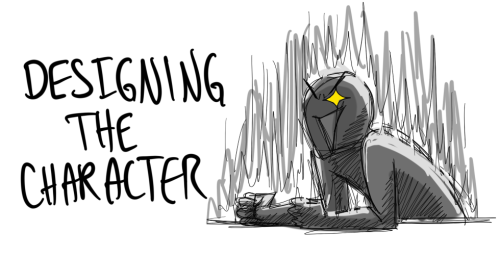

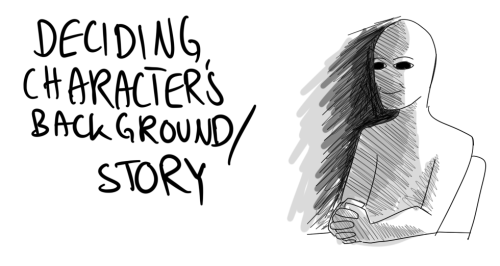
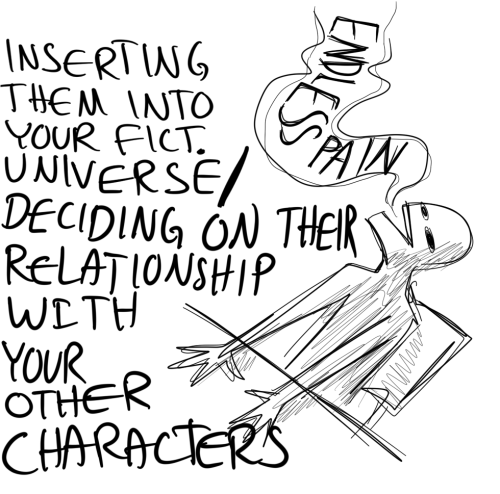
the suffering never ends
Glowy dark mode site skin
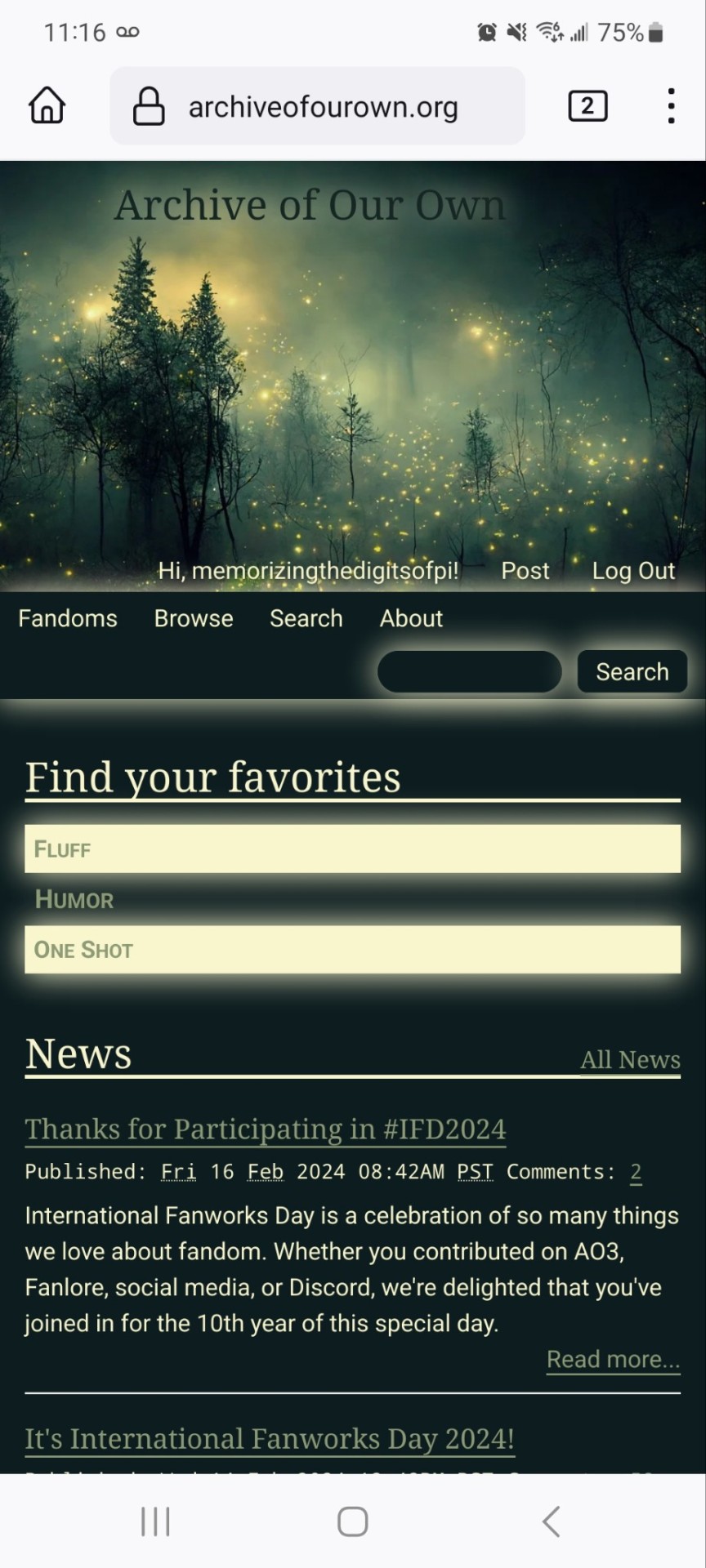



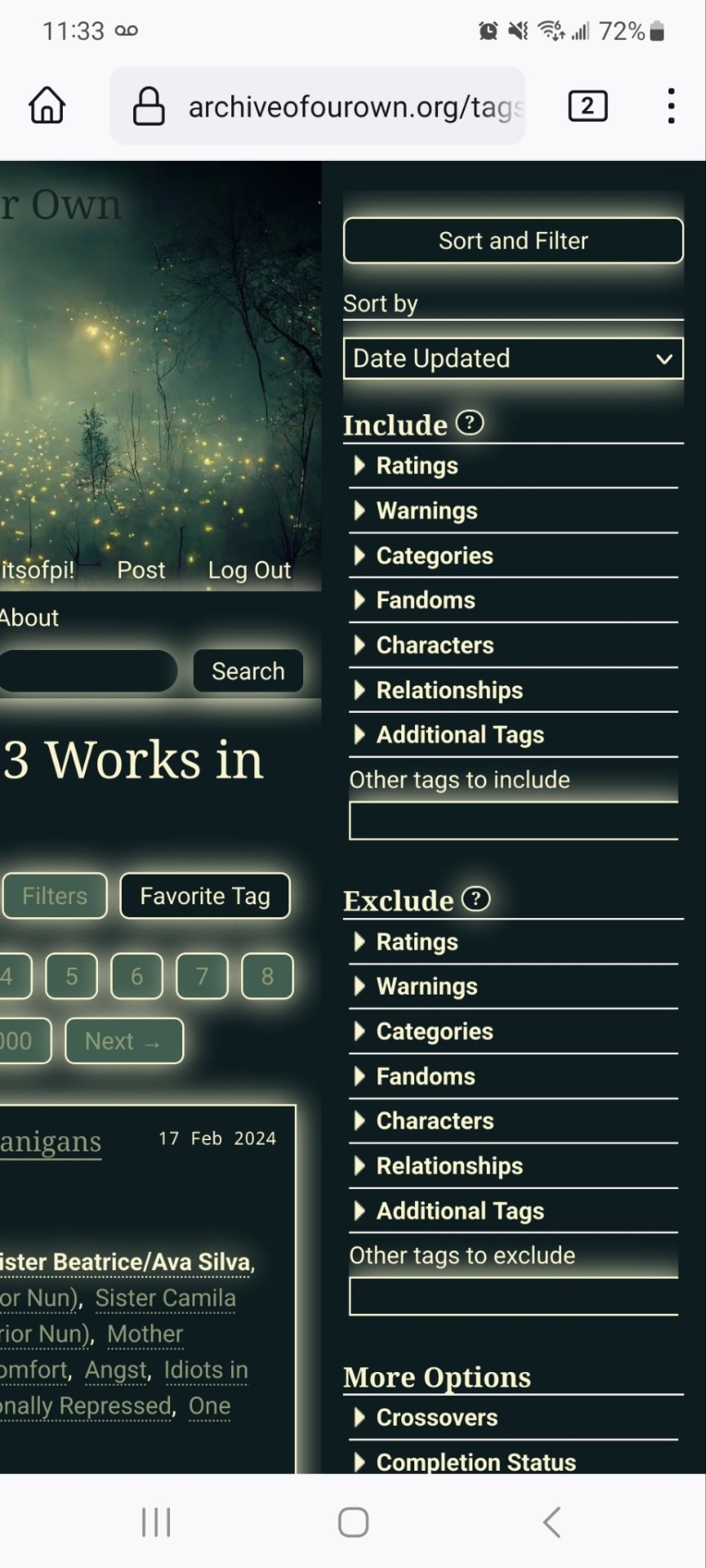
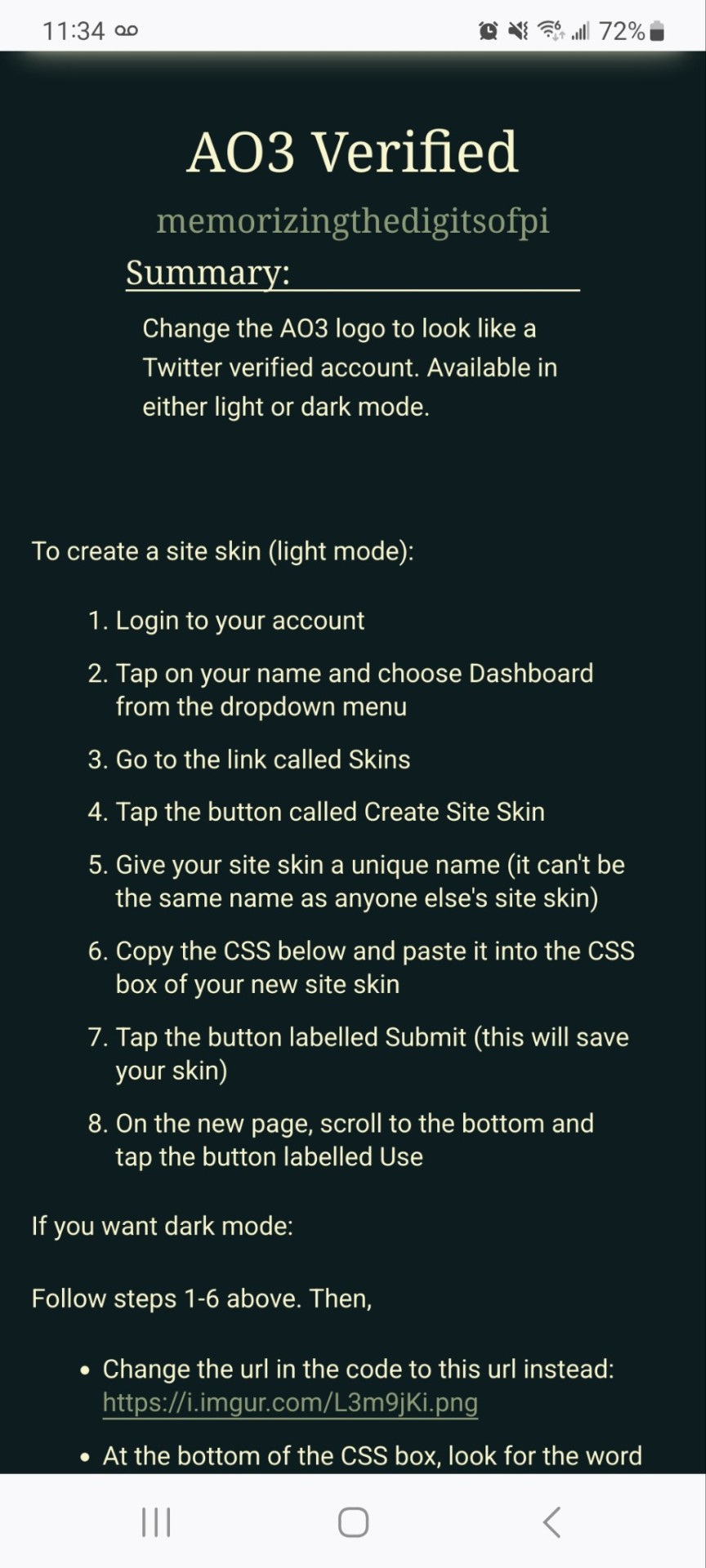
🎼 You would not believe your eyes, if 10 million fireflies ended up in the header of your AO3. 🎶
It's been a while since I tried glow effects, but I saw the fireflies and I couldn't resist.
CSS code under the cut.
#header { background-image: url("https://cdn.pixabay.com/photo/2022/10/19/16/56/fireflies-7533056_1280.jpg"); background-repeat: no-repeat; background-size: cover; background-position: center center; background-color: #152623; }
#header .heading { height: 15em; }
#header .primary { background: #0d1d1f; box-shadow: 0px 0px 15px #f9f6ce; }
#header .logo, #header .heading sup { visibility: hidden; }
#header .heading a { color: #152623; text-shadow: 0px 0px 15px #f9f6ce; }
.event .userstuff { background: #425e50; border: 1px solid #f9f6ce; }
#outer.wrapper { background: #0d1d1f; color: #f9f6ce; }
#main a { color: #8c9b76; }
#greeting a.dropdown-toggle, #header .actions a { color: #f9f6ce !important; text-shadow: 0px 0px 3px #152623; }
#greeting .menu, #header .dropdown .menu, #header .dropdown:hover a { background: #0d1d1f; box-shadow: 0px 0px 15px #f9f6ce; }
span.submit.actions input.button { display: none; }
#greeting img.icon { display: none; }
#header #search .text, .search [role="tooltip"] { background: #0d1d1f; box-shadow: 0px 0px 15px #f9f6ce; color: #f9f6ce !important; border: 1px solid #0d1d1f; }
form.search input[type=text], form.search input[type=submit], .autocomplete div.dropdown ul { background: #0d1d1f !important; border: none; box-shadow: 0px 0px 15px #f9f6ce; color: #f9f6ce; display: block; }
#header #search .text { width: 7em; }
.notice, .comment_notice, .kudos_notice, ul.notes, .caution, .error, .comment_error, .kudos_error, .alert.flash { background: #f9f6ce; box-shadow: 0px 0px 15px #f9f6ce !important; color: #0d1d1f; border: none; }
.notice a, .comment_notice a, .kudos_notice a, ul.notes a, .caution a, .error a, .comment_error a, .kudos_error a, .alert.flash a { color: #506957; font-weight: bold; }
.splash .module h3 { color: #f9f6ce; border-bottom: 2px solid #f9f6ce; }
.splash .favorite li:nth-of-type(2n+1) a { background: #f9f6ce; box-shadow: 0px 0px 15px #f9f6ce; color: #0d1d1f; font-weight: bold; font-variant: small-caps; }
.splash .favorite li:nth-of-type(2n+2) a { color: #f9f6ce; font-weight: bold; font-variant: small-caps; font-size: 110%; }
.splash .favorite li:nth-of-type(2n+1) a:hover, .splash .favorite li:nth-of-type(2n+2) a:hover { color: #f9f6ce; font-weight: bold; font-variant: small-caps; background: #425e50; }
#footer { background: #425e50; color: #f9f6ce; border-top: 3px solid #f9f6ce; box-shadow: 0px 0px 15px #f9f6ce; }
#footer a, #footer .heading { color: #f9f6ce; }
.actions a, .actions a:focus, .actions input:focus, .action:focus, .actions li input, .actions li input[type="submit"], input[type="submit"], .actions li label, ul.navigation.actions li a, .action:link, .actions a:link { background: #425e50; border: 1px solid #f9f6ce; color: #f9f6ce; box-shadow: 0px 0px 15px #f9f6ce; border-radius: 5px; }
.current, #dashboard .current { background: #f9f6ce !important; color: #0d1d1f !important; box-shadow: 0px 0px 15px #f9f6ce !important; border-radius: 5px; }
#dashboard.own { border-top: 5px solid #f9f6ce; border-bottom: 5px solid #f9f6ce; box-shadow: 0px 0px 15px #f9f6ce; }
#dashboard a:hover { background: #0d1d1f; box-shadow: 0px 0px 15px #f9f6ce; }
#dashboard a { color: #f9f6ce; }
dl.meta { border: 1px solid #f9f6ce; box-shadow: 0px 0px 15px #f9f6ce; }
.listbox .index { background: #0d1d1f; }
.listbox, fieldset fieldset.listbox { background: #f9f6ce; box-shadow: 0px 0px 15px #f9f6ce; }
form dl, fieldset, fieldset fieldset, fieldset fieldset fieldset, fieldset fieldset dl dl, dd.hideme, form blockquote.userstuff, input, select, select:focus, textarea, span.symbol.question, .own { background: #0d1d1f !important; color: #f9f6ce !important; border: 1px solid #f9f6ce; box-shadow: 0px 0px 15px #f9f6ce; }
.autocomplete li.added, .post .meta dd ul li.added, label, label.required { color: #f9f6ce; }
span.delete { background: #f9f6ce; box-shadow: 0px 0px 15px #f9f6ce; }
span.delete a { color: #0d1d1f !important; font-weight: bold; }
.ui-sortable li, .dynamic form, div.dynamic { background: #0d1d1f; border: 1px solid #f9f6ce; }
.dropdown { background: #0d1d1f; }
form.verbose legend, .verbose form legend { background: #f9f6ce; color: #0d1d1f; box-shadow: 0px 0px 15px #f9f6ce; }
li.blurb { border: 1px solid #f9f6ce; box-shadow: 0px 0px 15px #f9f6ce; }
.draft { background: #0d1d1f; color: #f9f6ce; border: 2px dashed #f9f6ce; box-shadow: 0px 0px 15px #f9f6ce; }
.draft .wrapper { background: #0d1d1f; border: 1px solid #f9f6ce; }
#header h2 { background: #f9f6ce !important; color: #0d1d1f; box-shadow: 0px 0px 15px #f9f6ce; }
#stat_chart svg rect:first-of-type { opacity: 60%; }
#stat_chart g[clip-path^=url] > g:nth-of-type(2) rect, #stat_chart svg g:nth-of-type(2) > g rect:last-of-type, #stat_chart g[clip-path^=url] > g:nth-of-type(2) rect:first-of-type { filter: hue-rotate(140deg); opacity: 80% !important; }
.statistics .index li:nth-of-type(2n) { background: #0d1d1f; border: 1px solid #f9f6ce; }
.reading h4.viewed, dl.index dd, table, th, dt.child { background: #0d1d1f; }
#modal, span.replied { background: #0d1d1f; color: #f9f6ce; border: 2px solid #f9f6ce; box-shadow: 0px 0px 15px #f9f6ce; }
h4.heading.byline { background: #f9f6ce; color: #0d1d1f; }
li.comment { border: 1px solid #f9f6ce; }
.comment div.icon { border-bottom: 5px solid #f9f6ce; box-shadow: 0px 0px 15px #f9f6ce; }
.thread .even { background: #425e50; }
.unread { background: #0d1d1f; border: 5px dashed #f9f6ce !important; }
span.unread { background: #f9f6ce; color: #0d1d1f; }
span.indicator::before { box-shadow: 0px 0px 15px #f9f6ce; }
.warnings .tag, .work .warning a.tag, dd.warning.tags a { border: 1px solid #f9f6ce; border-radius: 5px; background: #f9f6ce; padding-left: 2px; padding-right: 2px; box-shadow: 0px 0px 10px #f9f6ce; }
.relationships .tag, .work .relationships a.tag, dd.relationship.tags a { background: none; color: #f9f6ce !important; font-weight: bold; text-shadow: 0px 0px 15px #f9f6ce; }
.filters .expander { background: url("https://64.media.tumblr.com/3c89981f933f9f57157d6dcec6fd85a7/94c6737c6db9ad60-e5/s1280x1920/f7557e617a5439c506721bd326580a0cb4c1f8d8.png") left center no-repeat; color: #f9f6ce !important; font-weight: bold; }
.filters .expanded .expander { background: url("https://64.media.tumblr.com/dab095a2fd9387bc1e0c57747ba6b13f/94c6737c6db9ad60-ad/s1280x1920/c1a4e14e0565cdcac5d3e20bebac3ab440f2d607.png") left center no-repeat; }
SOME BOOKS RECOMMENDATIONS THAT I THINK ARE GOOD
FOR BEGINNER AND NON-BEGINNER WITCH :
psychic witch by mat Auryn
Secret teaching of all ages encyclopedia of esoteric teaching
weave the liminal by Laura tempest zakroff
six ways by aidan wachter
the grek magical papyri in translation edited by dieter betz
the complete grimoire by lidia pradas
witchery by juliat diaz
spells for change by frankie castanea
celtic witchcraft by mabh savage
the althlone hiatory of witchcraft and magic in europe
the spell book for new witches by ambrosia hawthorn
kate freuler of blood and bones by mat Auryn
the kitchen witch's spell book by cerridwen greenleaf
love spells by anastasia greywolf
encyclopedia of magic herbs by scott Cunningham
guided tarot by stefanie caponi
the witch's journal by selene silverwind
the casting of spells by Christopher penczak
sacred essential oils edited by claire waite brown
the crystal bible by judy hall
the magical household by scott Cunningham
wicca in the kitchen by scott Cunningham
the house witch by arin Murphy-Hiscock
the heart witch's compendium by anna franklin
the heart witch's kitchen herbal by anna franklin
a spell book for the season
the complete illustrated book of herbs
italian folk magic by mary grace fahrun
the complete illustrated guide to palmistry by peter west
apractical step by step guide to herbs for the home and garden by Shirley reid
top 50 edible plants for pots by angie thomas
the mystical magical marvelous world of DREAMS by wilda b. tanner
the eclectic witch's book of shadows by deborah blake
plant witchery by Juliet diaz
the witch at thd forest's edge
subtle energy by keith miller
protection&reversal magick by jason miller
curses,hexes&crossing by S. connolly
modern witch by devin hunter
the complete book of incense,oils&brews by scott Cunningham
encyclopedia of 5000 spells by judika illes
the good witch's journal by selene silverwind
inner magic a guide to witchcraft
spell crafting by arin Murphy
the green witch by arin murphy
moon magic by diane ahlquist
protection magick by cassandra eason
the little big book by ileana abrev
herbal remedies by andrew chevallier
witchcraft for healing by patti wigington
complete book of correspondences by sandra kynes
poppet magick by silver davenwolf
earth medicine by kenneth meadows
earth power by scott Cunningham
a century of spells by draja mickaharic
positive magic by marion Weinstein




two (2) people asked how i did the matchbook thing so take this
this is just a simple idea but if you spend some more time you can get real krazy with it:

making fake prints is so fun please do it immediately free resources under cut xoxo


retrosupply my love

Memory/help with exams spell jar 💜
Intended to soothe the mind and help the user recall information during finals/midterms
I made a small spell jar to carry around but this would also work with other containers (small tin, pouch, etc. - reuse things!)
Materials:
Container
Preferred method of cleansing (incense, sound, etc.)
Lavender
Salt (i used pink salt)
Yarrow
Elderflower
3 cloves
1 bay leaf
Amethyst
Quartz
Citrine
Pen/pencil/etc.
Purple, white, grey, or bronze wax to seal container
Step 1:
Cleanse your materials and place them either on your altar or study space
Step 2:
Create a sigil and write it on the bay leaf. You can derive sigils from words/phrases like "knowledge" "memory" "good grades" or really anything. Break the bay leaf into bits and set it aside.
Step 3:
Add herbs and crystals in this order:
Salt
Crushed bay leaf
Amethyst
Yarrow
Elderflower
Lavender
Citrine
Cloves
Step 4:
Close the container and seal it with wax. If the container is a pouch, make a little wax medallion by dripping it on a smooth surface such as a mirror.
Step 5:
Charge it by keeping it near you while you study. Cleanse with moonlight or blowing on it.
Good luck!
I do appreciate people willing to be educated on creating characters who are Muslim and wanting to be respectful but there is a whole lot of nuance in Muslims and different interpretations of beliefs that people need to understand.

The main one I’ve seen a lot is “here is how to correctly have a hijabi character” and it’s usually a headscarf covering all of the hair and modest, which is good, this is a good representation of a Muslim, but on the flip side, there are so many different interpretations of veiling among Muslims that saying only one is correct just seeks to enforce a sort of homogeneity among Muslims that disregards our own cultural traditions all over the world. Not all of us wear hijab or veil in the same way, not all of us have the same interpretations. As much as people try to understand that Islam is a religion, there are many who treat being Muslim as if its the equivalent of an ethnicity.

Not to say veiling is exclusively Islamic either, plenty of cultures and religions other than Islam veil/practice modesty, what I’m mainly trying to say is that different cultures have different cultural traditions surrounding modesty/veiling/hijab within Islam. In different cultures around the world there are also different terms for the type of hijab/veil they wear as well. Hijab will look different wherever you are looking, and the type of hijab style your character might wear may pertain to which culture they may come from. It’s important to keep this in mind while also being aware of inter-communal nuance.
(This is coming from a Muslim from cultures where people did not used to veil as many deem ‘acceptable’ now)

Just for example: both of these women are Muslim, they both wear a scarf, and neither is more Muslim than the other bc one has visible hair. Nobody has the right to determine who is a better Muslim or not for how they chose to cover, and I don’t think folks who aren’t Muslim should be upholding this kind of belief either, even if their intentions are in the right place.
This is also not to say “hey just slap a scarf on ur Muslim character bam it’s a hijab” when a lot of the posts about creating characters who are Muslims, especially hijabis, came from a place of people not understanding the hijab or it’s intention, it also comes from a fear of portraying more modest/religious Muslims which is rooted in Islamophobia - since the hijabi on the left would probably be better liked by audiences who aren’t Muslim bc some of her hair is shown (*cough* Netflix *cough*). So, there is a lot of nuance here.
Ofc not everyone is going to agree with this and there is plenty, and i mean plenty, of contested sources and voices about this all throughout the Muslim community, this is my opinion because quite frankly I’m tired of this belittling of different type of veiling because it doesn’t fit people’s view of hijab (from both Muslims and those who aren’t).
-
 constanceboulevard liked this · 1 year ago
constanceboulevard liked this · 1 year ago -
 catharusustulatus liked this · 1 year ago
catharusustulatus liked this · 1 year ago -
 aggggsstuff liked this · 1 year ago
aggggsstuff liked this · 1 year ago -
 ocalaghan reblogged this · 2 years ago
ocalaghan reblogged this · 2 years ago -
 helainanator liked this · 2 years ago
helainanator liked this · 2 years ago -
 stunt-muppet liked this · 2 years ago
stunt-muppet liked this · 2 years ago -
 captains-barnes reblogged this · 2 years ago
captains-barnes reblogged this · 2 years ago -
 biichama liked this · 2 years ago
biichama liked this · 2 years ago -
 ceebee-eebee reblogged this · 2 years ago
ceebee-eebee reblogged this · 2 years ago -
 myinitialsarentkdtb liked this · 2 years ago
myinitialsarentkdtb liked this · 2 years ago -
 ceebee-eebee liked this · 2 years ago
ceebee-eebee liked this · 2 years ago -
 bucky-thebae-barnes reblogged this · 2 years ago
bucky-thebae-barnes reblogged this · 2 years ago -
 doctoraliceharvey reblogged this · 2 years ago
doctoraliceharvey reblogged this · 2 years ago -
 doctoraliceharvey liked this · 2 years ago
doctoraliceharvey liked this · 2 years ago -
 margotgrissom reblogged this · 2 years ago
margotgrissom reblogged this · 2 years ago -
 seriously-n0pe reblogged this · 2 years ago
seriously-n0pe reblogged this · 2 years ago -
 accidentalanarchy1305 reblogged this · 2 years ago
accidentalanarchy1305 reblogged this · 2 years ago -
 ididntknowwhatyouwereexpecting liked this · 2 years ago
ididntknowwhatyouwereexpecting liked this · 2 years ago -
 notdefault reblogged this · 2 years ago
notdefault reblogged this · 2 years ago -
 foreverapprentice liked this · 2 years ago
foreverapprentice liked this · 2 years ago -
 thisisnotmyhomeplanet liked this · 2 years ago
thisisnotmyhomeplanet liked this · 2 years ago -
 moonlightpumpkin liked this · 2 years ago
moonlightpumpkin liked this · 2 years ago -
 crazyfangirlallert reblogged this · 2 years ago
crazyfangirlallert reblogged this · 2 years ago -
 strawberriii-mochiii liked this · 2 years ago
strawberriii-mochiii liked this · 2 years ago -
 thequeervampiric liked this · 2 years ago
thequeervampiric liked this · 2 years ago -
 spooky-lord reblogged this · 2 years ago
spooky-lord reblogged this · 2 years ago -
 spooky-lord liked this · 2 years ago
spooky-lord liked this · 2 years ago -
 sleepysongbirds liked this · 2 years ago
sleepysongbirds liked this · 2 years ago -
 inugami92 reblogged this · 2 years ago
inugami92 reblogged this · 2 years ago -
 inugami92 liked this · 2 years ago
inugami92 liked this · 2 years ago -
 7daysofwolves liked this · 2 years ago
7daysofwolves liked this · 2 years ago -
 max-the-dork liked this · 2 years ago
max-the-dork liked this · 2 years ago -
 dinomilkshakes liked this · 2 years ago
dinomilkshakes liked this · 2 years ago -
 digiditto liked this · 2 years ago
digiditto liked this · 2 years ago -
 marcothepenix liked this · 2 years ago
marcothepenix liked this · 2 years ago -
 notdefault liked this · 2 years ago
notdefault liked this · 2 years ago -
 undyne-the-fish liked this · 2 years ago
undyne-the-fish liked this · 2 years ago -
 hypothetical-person liked this · 2 years ago
hypothetical-person liked this · 2 years ago -
 spicy-bunz liked this · 2 years ago
spicy-bunz liked this · 2 years ago -
 bluhbluhthisbitch liked this · 2 years ago
bluhbluhthisbitch liked this · 2 years ago -
 ultra-firelily liked this · 2 years ago
ultra-firelily liked this · 2 years ago -
 super-dimension-fortress liked this · 2 years ago
super-dimension-fortress liked this · 2 years ago -
 artemispanthar reblogged this · 2 years ago
artemispanthar reblogged this · 2 years ago -
 k-iorran liked this · 2 years ago
k-iorran liked this · 2 years ago -
 midnightbrittany reblogged this · 2 years ago
midnightbrittany reblogged this · 2 years ago -
 thxrapyy reblogged this · 2 years ago
thxrapyy reblogged this · 2 years ago -
 strangerthings64 liked this · 2 years ago
strangerthings64 liked this · 2 years ago -
 letmeplaytheliontoo reblogged this · 2 years ago
letmeplaytheliontoo reblogged this · 2 years ago
